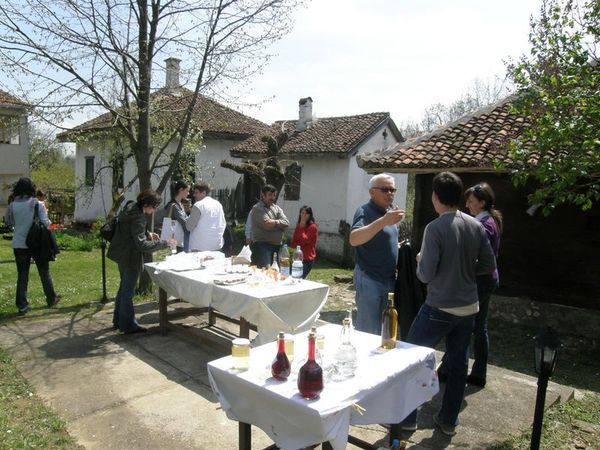On the occasion of the International Day for Monuments and Sites, 18th April – this year dedicated to the Heritage of Agriculture - ICOMOS National Committee of Serbia decided to organize a visit to the region of Serbia where plum is largely grown and cultivated. The household of Mr Dragan Colović in the village of Mala Vrbica near the city of Kragujevac hosted the members of the National Committee, as well as journalists and other experts. The Colović family is one of those who have developed and prospered during last two centuries thanks to cultivation of plums and producing plum products (well known Serbian plum brandy “Šljivovica”, plum jam, prunes, etc). Besides the sightseeing of buildings designed for the traditional processing of plums, several lectures and the discussion were held related to the cultural aspects of cultivation, processing and consuming the plum.
Why exactly the plum?
Plum has always been a very significant agricultural product in Serbia. Its cultivation had a great impact on creating the cultural landscape of the Serbian village which was recognized in literature together with its role in customs and ethnomedicine. Plum was used as food, but mostly in production of spirits. It significantly influenced the development of the national economy of the second half of the 19th century and the first half of the 20th century. The plum growing and processing also resulted in building of various types of vernacular buildings (sheds where the brandy is made, brandy storages, prune drying facilities, etc) as well as many utensils and vessels. Some of them are still functioning, but mostly they have lost original purpose, while some have even vanished. This is the rationale for the need of their revitalization.
Various aspects of the role and importance of the plum and its impact on immovable and movable cultural properties of the region, especially on intangible heritage came up in the course of conversation. Perceiving the role of the plum in creating the cultural heritage, special attention was paid to revival of the plum culture and conservation of the vernacular architecture related to plum cultivation and processing.
